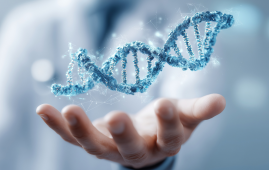

A new study done by scientists at the University of Nottingham discovered that teachers may be attributing indicators of age-related immaturity in youngsters to diseases such as Attention-Deficit/Hyperactivity Disorder (ADHD) or Autism Spectrum Disorder (ASD).
The study’s findings, published in the journal European Child & Adolescent Psychiatry, revealed that the youngest students in a class, those born just before the school entry cut-off date, were overrepresented among children receiving an ADHD diagnosis or medication for the condition.
Experts investigated how being one of the youngest children in class affects the risk of being diagnosed with ADHD or ASD. ADHD is a condition in which people struggle with focus and become too active. ASD is a complex developmental syndrome that affects how people communicate and connect.
“This review shows that adults involved in identifying or raising concerns over a child’s behavior—such as parents and teachers—may be inadvertently misattributing relative immaturity as symptoms of ADHD. The child’s age concerning their classmates (their ‘relative’ age) needs to be considered when making this kind of diagnosis,” says Professor Kapil Sayal from the School of Medicine at the University, and senior author of the paper.
Detailed searches were conducted to find all studies published on this topic internationally. Researchers examined the 32 identified studies. The majority of this research focused on ADHD, while two focused on ASD.
The data indicated that younger kids in the school year are more likely to be diagnosed with ADHD and prescribed medication than their older counterparts. The size of this ‘ relative age’ effect varied among investigations.
For ASD, the youngest children in a class were also more likely to be diagnosed, but further study is needed because there are only a few studies available.
Interestingly, there was a greater disparity in how teachers judged these younger children than parents.
Dr. Eleni Frisira, from the School of Medicine and lead author of the study, said, “Teachers play an important role in identifying ADHD symptoms in children. Our findings suggest that they can be more likely to rate younger students in a class as having ADHD symptoms than their older classmates. Teachers must be supported in considering the relative age of a child in a classroom when ADHD is being queried.”
Dr. Josephine Holland, one of the paper’s authors, added, “This phenomenon has been shown in research for over a decade, but knowing about it does not seem to be changing practice.”
The study stresses the importance of considering a child’s age to their peers when assessing and diagnosing illnesses such as ADHD and ASD. This is a crucial takeaway message for healthcare professionals who assess young children and teachers and parents who see and report symptoms.
For more information: Eleni Frisira et al, Systematic review and meta-analysis: relative age in attention-deficit/ hyperactivity disorder and autism spectrum disorder, European Child & Adolescent Psychiatry (2024). DOI: 10.1007/s00787-024-02459-x
more recommended stories
 Can Ketogenic Diets Help PCOS? Meta-Analysis Insights
Can Ketogenic Diets Help PCOS? Meta-Analysis InsightsKey Takeaways (Quick Summary) A Clinical.
 Ancient HHV-6 Genomes Confirm Iron Age Viral Integration
Ancient HHV-6 Genomes Confirm Iron Age Viral IntegrationKey Takeaways for HCPs Scientists reconstructed.
 Silica Nanomatrix Boosts Dendritic Cell Cancer Therapy
Silica Nanomatrix Boosts Dendritic Cell Cancer TherapyKey Points Summary Researchers developed a.
 Vagus Nerve and Cardiac Aging: New Heart Study
Vagus Nerve and Cardiac Aging: New Heart StudyKey Takeaways for Healthcare Professionals Preserving.
 Cognitive Distraction From Conversation While Driving
Cognitive Distraction From Conversation While DrivingKey Takeaways (Quick Summary) Talking, not.
 Fat-Regulating Enzyme Offers New Target for Obesity
Fat-Regulating Enzyme Offers New Target for ObesityKey Highlights (Quick Summary) Researchers identified.
 Spatial Computing Explains How Brain Organizes Cognition
Spatial Computing Explains How Brain Organizes CognitionKey Takeaways (Quick Summary) MIT researchers.
 Gestational Diabetes Risk Identified by Blood Metabolites
Gestational Diabetes Risk Identified by Blood MetabolitesKey Takeaways (Quick Summary for Clinicians).
 Phage Therapy Study Reveals RNA-Based Infection Control
Phage Therapy Study Reveals RNA-Based Infection ControlKey Takeaways (Quick Summary) Researchers uncovered.
 Pelvic Floor Disorders: Treatable Yet Often Ignored
Pelvic Floor Disorders: Treatable Yet Often IgnoredKey Takeaways (Quick Summary) Pelvic floor.

Leave a Comment